In this evolving hybrid job market, where half the labor force is millennials, you must strategically position your employer brand. This is especially important as most companies fail to recruit and retain talent, even for critical positions. What results is inadequate capitalization of business opportunities and inability to fulfill market demand.
Enter Employer Branding — A comprehensive set of business practices to build capabilities that help you gain brand equity and attract top talent. For this, the first thing to know is that today’s job seekers target working for an organization with a positive and supportive culture. It is also critical that your business values the diversity, creativity, and personal growth of your staff. Workplaces have to let employees enjoy their work, without majorly affecting their lifestyles.
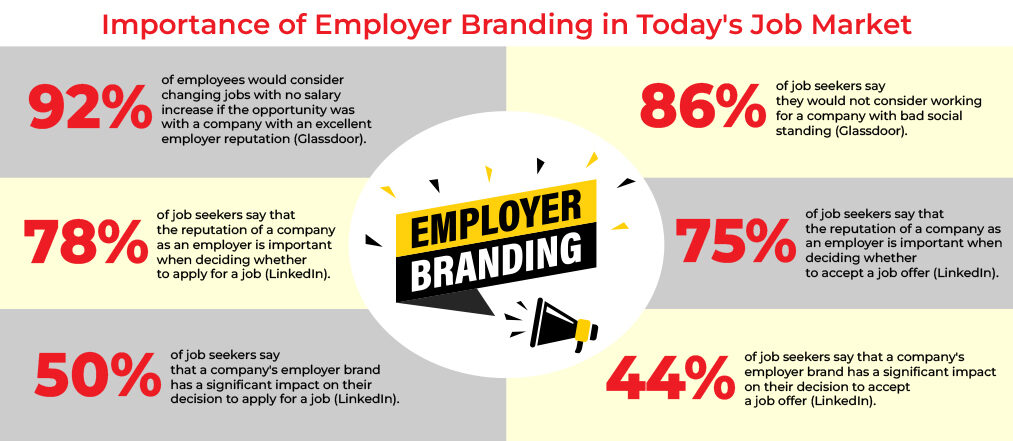
Table of Contents
- What is Employer Branding?
- Why is Employer Branding Important?
- What is the ROI of Employer Branding?
- Employer Branding Examples
- Employer Branding and Recruitment
- How to Build an Employer Branding Strategy?
- Employer Branding Best Practices
- Conclusion
This blog provides you with the answer to all pain-points discussed above. In two words, the solution is Employer Branding. This is an area of business policy that will take care of all your staffing woes. When done in the correct manner and in line with the suggestions made in this blog, businesses will discover a treasure house of motivated, result-oriented employees. Companies will also find that they are able to generate a stronger market presence than their competitors.
THE CHALLENGE
Glassdoor reports that nine of 10 employees will change jobs, even without a salary hike, if the opportunity is from a company that has branded itself as an employer of choice. Eight of 10 job seekers say they would not prefer working for an organization with a lower profile.
With so much demand for “Hail-fellow-well-met” natured employers, the question is why organizations are still grappling with attracting, hiring, and retaining their best talent. Why are companies failing to create employer branding strategies that reflect the values, beliefs, and social mores of today’s workforce (a mix of millennials and baby boomers)
It is, thus, no surprise that building and maintaining an employer brand has become the biggest issue for HR and organizational leaders today.
You are risking your business if you are not managing your company’s reputation as part of your employer branding strategy. It is critical when commentators and business analysts have predicted that a new wave of ‘Great Resignation’ looms in 2023, with enterprises struggling to protect margins in a post-Covid world.
No employer can afford to lose its talent due to an uninspiring reputation. Now is the time to reform your employer branding strategies and meet modern employee expectations.
If you want to be on the list of the most desirable employers in your industry, let us understand what actual employer branding is and how you can become the preferred employer brand for today’s modern workforce.
Looking for a visual and interactive way to communicate your employer brand to your employees, job candidates, and other stakeholders? Explore this Employer Branding PowerPoint Presentation to get started!
Click Here to Download a Content-ready PowerPoint Presentation on Employer Branding
What is Employer Branding?
"Employer Branding establishes the identity of the firm as an employer. It encompasses the firm's values, systems, policies, and behaviors toward the objectives of attracting, motivating, and retaining the firm's current and potential employees." (The Conference Board: 2001)
Employer branding is a well-established concept with even greater relevance in this well-connected world. It is the process of promoting your organization as the employer of choice to potential employees, job seekers, or the desired target group.
To attract talented candidates, businesses need to be more than just a good corporate brand. Job seekers always know the company’s innovative products or reliable customer service but expect more from its work culture. Aspiring new hires seek these answers from recruiters.
“Why should I work for you?”
“How about your employee value proposition?”
Thus, your employer brand is how you are perceived as an employer. It is the sum total of your company’s reputation among potential candidates, existing employees, and former workers.
Employer branding includes highlighting the company’s employee value proposition and building a positive reputation for the ‘great workplace’ you provide. By creating a strong employer brand, a company can differentiate itself from its competitors and improve employee satisfaction and retention.
Why is Employer Branding Important?
Employer branding attracts top talent to your company, improves employee morale and satisfaction, and enhances your company's reputation. Here are some key points to consider:
Attracting top talent: A strong employer brand can make your company stay ahead in a competitive job market and engage top candidates who are looking for a positive and engaging work environment.
Improving employee morale and satisfaction: Employees are more likely to be captivated and motivated when they are proud of their company and feel valued and supported. It can lead to increased productivity and reduced employee turnover.
Enhancing your company's reputation: A positive employer brand can help improve your reputation among potential employees and the community. It lets you build and maintain trust and credibility, which can benefit business development and growth.
Differentiating your company from competitors: A strong employer brand can help your company differentiate itself from competitors and provide a unique value proposition for potential employees. This is a must in industries with a lot of demand and competition for top talent.
Investing in employer branding is crucial for short-term and long-term success.
Explore this EVP Presentation to outline the benefits and rewards an employee can receive in exchange for contributing to your company. It is a helpful tool for attracting, retaining, and engaging top talent and communicating the value that your company offers to its employees.
Click Here To Download Editable PPT Presentation on Employee Value Proposition
What is the ROI of Employer Branding?
Employer branding ROI is calculated using more than one metric, and no universal set of metrics works for all organizations. Instead, every organization needs to focus on identifying the right combination of metrics that will provide insights about their employer branding efforts based on specific goals.
These are the twelve common metrics to measure employer branding ROI:
- Number of job applications received
- Quality of job applicants
- Employee retention rates
- Employee satisfaction levels
- Brand awareness among potential employees
- Employee referral rates
- Time-to-fill for open positions
- Employee engagement levels
- Candidate experience ratings
- Cost-per-hire
- Social media engagement with employer brand content
- Employee advocacy metrics (e.g., number of employees sharing employer brand content on their social media accounts)
Employer branding is an ongoing process that organizations must repeat several times a year. Below is an action plan that both established businesses and startups can follow to align their objectives with branding measures to ensure maximum return for their efforts
Having a process in place can ensure high precision regarding investment and your employer branding strategy, delivering increased value.
Employer Branding Examples
Every company’s employer branding efforts vary depending on the criteria used and the specific industries and markets in which it operates. Some companies often cited as having strong employer branding include Google, Zappos, Patagonia, Apple, Microsoft, and others. These are known for their innovative work environments, generous benefits and perks, and commitment to diversity and inclusion. These companies promote their employer brand by sharing stories of employee success and satisfaction, offering opportunities for professional development, and highlighting the company’s mission and values.
Let’s check out some popular examples of Employer Branding in action and their reviews:
Google is known for its strong employer brand, focusing on innovation, collaboration, and a fun work environment. The company regularly shares stories of its employees and their experiences working at Google, highlighting the benefits and opportunities available to them. The company focuses on collaboration and creativity and encourages employees to think outside the box and challenge the status quo.
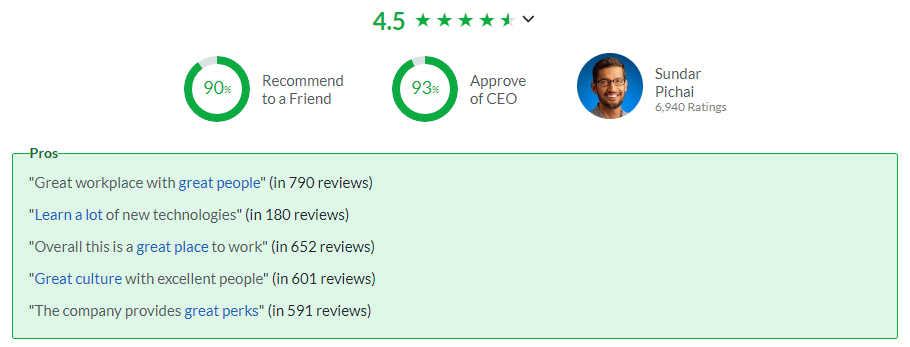
Patagonia
Patagonia, the outdoor clothing company, has a strong employer brand that is focused on environmental sustainability and social responsibility. The company shares the work experiences of its employees and their commitment to protecting the environment. It offers a range of benefits and programs to support its mission.
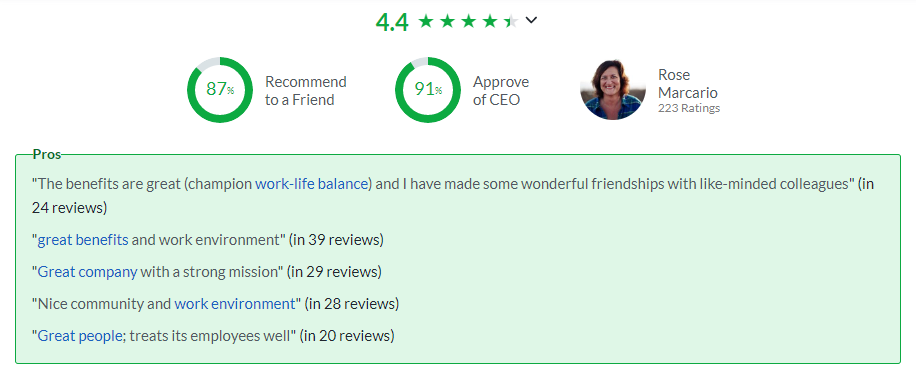
Apple
Apple is another example of a company with a strong employer brand. The company focuses on innovation and design and offers its employees opportunities for professional development. Apple also promotes its diverse and inclusive work environment and regularly encourages storytelling from employees to present its unique brand perception as an employer of choice.
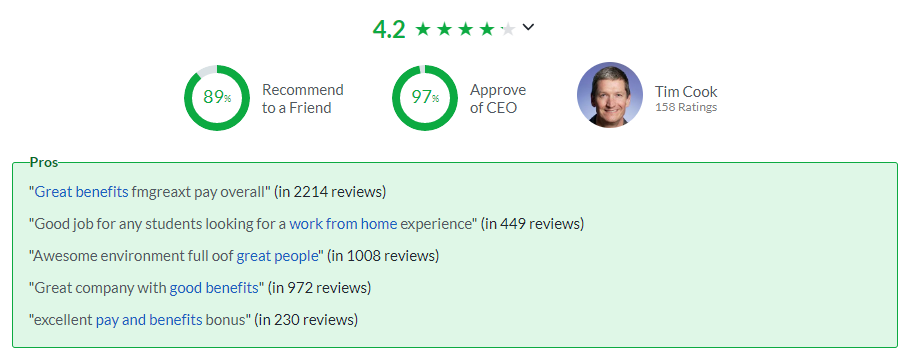
Zappos
Zappos, the online shoe and clothing retailer, has built a strong employer brand based on its focus on company culture and employee happiness. Zappos has a reputation for offering generous benefits and perks and fostering a collaborative and inclusive work environment. This organization is known for its emphasis on teamwork and encourages employees to have fun at work.
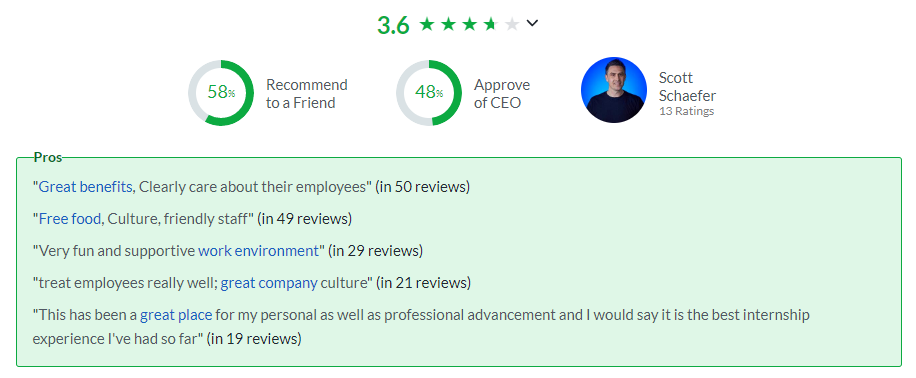
Explore this employer branding playbook to provide a roadmap for your branding efforts, outlining the steps you should take and the tools and resources you will need to promote your employer brand effectively.
Download this Editable Employer Brand Playbook
The Importance of Employer Branding in Recruitment
An employer branding effort passes through every touchpoint: From the first message you send to potential candidates to your employees’ exit interviews. Hence, building a strong employer brand is crucial for recruiting the right talent for the right roles.
Following are the three reasons employer branding is a crucial part of a recruitment strategy:
Provides a competitive edge in attracting talent
Talented people want to work with leading employers. Recruiters are proactive in attracting and finding the best candidates—including those who aren’t actively searching for a job. In this scenario, employer branding can become your secret recipe to attract the best candidates.
Retaining your best employees
People working for companies with solid employer reputations are more engaged and exhibit lower turnover rates leading to increased business growth. These happy employees feel proud and satisfied to be part of their company and become brand ambassadors and advocates without increasing your marketing spending.
Reduces cost per hire
Companies with a weak employer brand are more likely to spend almost double on cost per hire. Moreover, some companies even pay more employee wages to compensate for their bad reputations. Despite all this, most job seekers would still rule out companies with a negative picture.
Note: There is also a term called “Recruitment Marketing” that many HR professionals use with “Employer Branding” interchangeably.
These terms are interrelated; both affect the company’s image as an employer. The primary difference is that employer branding focuses on defining and positioning your talent brand, while recruitment marketing focuses on communicating who you are as an employer. Employer branding comes first, whereas recruitment marketing is about promoting your employer brand in the hiring process.
Streamline your recruitment marketing process with the help of this comprehensive PowerPoint Presentation. Prepare a focused team to present your brand in a positive way to the target audience.
Download This Content-ready Recruitment Marketing Presentation
How to Build an Employer Branding Strategy?
A company can communicate its Employer Value Proposition (EVP) to potential and current employees with an effective employer branding strategy. Here are some steps to follow when building an employer branding strategy:
Define your EVP: EVP defines the unique benefits and experiences your company offers its employees. It should be based on your company's culture, values, and mission and differentiate you from other employers in your industry.
Identify your target audience: Consider the type of employees you want to attract and retain, and tailor your EVP and branding messages to appeal to them.
Create a branding message: Your employer brand message should concisely summarize your EVP and speak to your potential candidates, and it should be memorable, emotional, and persuasive.
Create a content plan: It should define the content, such as blogs, articles, videos, and social media posts, that you will create and share as your branding message to your targeted group.
Promote your brand: Use channels such as the company website, job portals, and social media to promote your employer brand and reach out to the maximum number of your target audience.
Monitor and measure your success: Use metrics such as website traffic, job application rates, employee satisfaction, employee retention rate, etc., to track the effectiveness of your employer branding strategy and make changes as needed. You can streamline the process of monitoring and tracking your activities using easy-to-understand dashboards.
Employer Branding Best Practices
To win the ongoing war for talent, you must follow the employer branding best practices given below. Depending on your organization, you can pick the ones that will help you meet your current goals and objectives.
Provide a Holistic Experience to Your Workforce Throughout Their Employment Journey
Your strategic approach to recruiting, engaging, and retaining employees speaks a lot about your employer brand. You must provide a holistic and healthy work experience to employees, from interviewing to onboarding to exit interviews, ensuring a positive impact.
Be Accessible on Different Channels and Deliver Corporate Insights
It is crucial to deliver corporate insights to gain people’s trust and attention. For example, you can post exciting pictures and reels on Instagram and publish engaging videos on YouTube showcasing the work culture. It will help you establish a personal connection with the audience.
Know Your Audience
It is essential to identify the people you need, why you need them, where you will find them and how you can attract them. Once you understand and know your audience, you can connect with them on a subliminal level as well.
Give a Clear Description of Your Existence
Tell the world about your mission, vision, and values. And you can make this information accessible through your communication channels. You can mention what you stand for, what inspires you, and what makes your business stand out.
Consider The Candidates’ Perspective
Know what potential candidates or applicants expect from employers and understand their pain points. It will help if you step into the candidate’s shoes to address these pain points. It is like a lead nurturing process in which you should do your best to understand what shapes people’s employer-choice decisions.
Foster Lifelong Learning and Development
Evaluate and upskill your existing employees to help them grow in their respective careers. Take initiatives to foster valuable learning and provide a great working experience to your workforce.
Invest in Social Media and Grow Your Network
Social media lets you connect with global audiences from diverse backgrounds and interests. Invest in social media networking to stay in touch with the talent pool. Networking will help your brand name grow organically.
Design Processes That Build Trust
Gain people’s trust and become an organization that doesn’t need to blow its own trumpet. If your employees are happy with your system and processes, they can become brand ambassadors and advocates and spread positive word of mouth. Most companies, however, have strict policies about what employees can say about them on social media. The best employers allow their workers to share their genuine opinions and experiences with people inside and outside the organization.
Create a Diverse Workplace Environment
Creating a diverse workplace comes with challenges but provides immense opportunities to expand your footprint across borders. Being open to people from varied backgrounds and territories can help you build a stronger employer brand that welcomes global talent.
Keep Up With Digital, Economic, and HR Trends
Be aware of how the world around you is changing and how constantly evolving technology impacts the behavior and expectations of professionals. Keeping tabs on these can help you change your strategies when needed and let you surpass prevailing standards of human resources and the job market.
Organizations must be proactive in every aspect to establish a powerful employer brand. Whether offering employees higher pay packages, creating an unbiased workplace culture, helping them grow, providing hybrid working choices, or flexible working hours, it requires great, nuanced attention until it becomes a well-established practice.
Use this PPT Presentation to promote your employer brand on social media and encourage your employees to share positive experiences and content about your company. It can enhance your reputation and reach.
Download this Template and Learn How to Promote Employer Branding on Social Media
The Great Driver of Happy Workforce
As the scramble for talent gets even more frenetic, organizations creating and strategically communicating their employer brand will be in a far better position to attract top candidates than companies that don’t invest in employer branding.
A well-thought-out employer branding strategy will benefit your brand as you implement a talent acquisition strategy. It will help you decrease cost-per-hires, streamline your application process, improve your employee journey, and foster a community of engaged candidates. Everything depends on your efforts to build your employer brand and how people perceive it.
If you struggle to attract and retain the best talent pool in this dynamic market, your employer branding efforts might be at fault. SlideTeam offers a valuable solution in terms of PowerPoint Templates for all Employer Branding Topics, such as Employee Value Proposition, Recruitment Marketing, Talent Acquisition, Employer Branding Strategy, and much more. You can download these PPT Presentations and Templates to guide your team through everything about Employer Branding. We also have a huge repository of Dashboards, Roadmaps, Tableau, Matrices, Charts & Graphs, and Infographics to help you present complex data. All our slides, complete decks, and one-pagers are content-ready and customizable.
For more information, feel free to contact us here. If you want to get started with your customized template today, connect with our Presentation Services team.


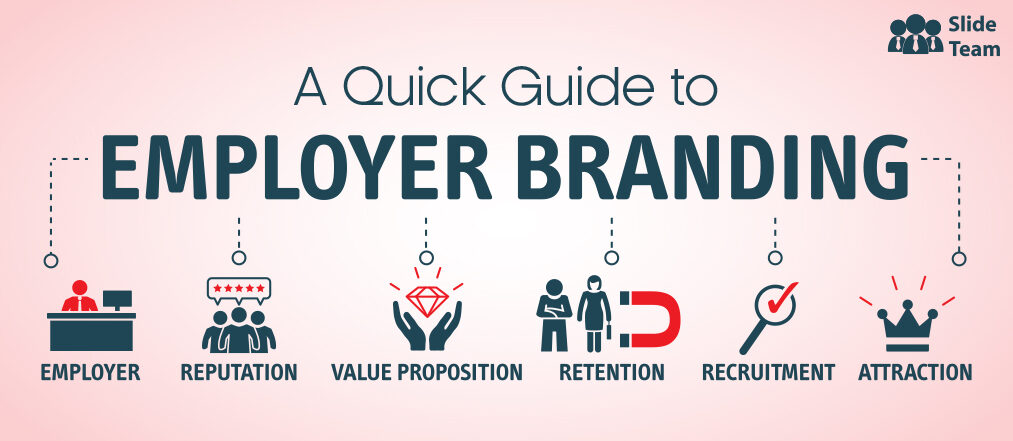


 Customer Reviews
Customer Reviews

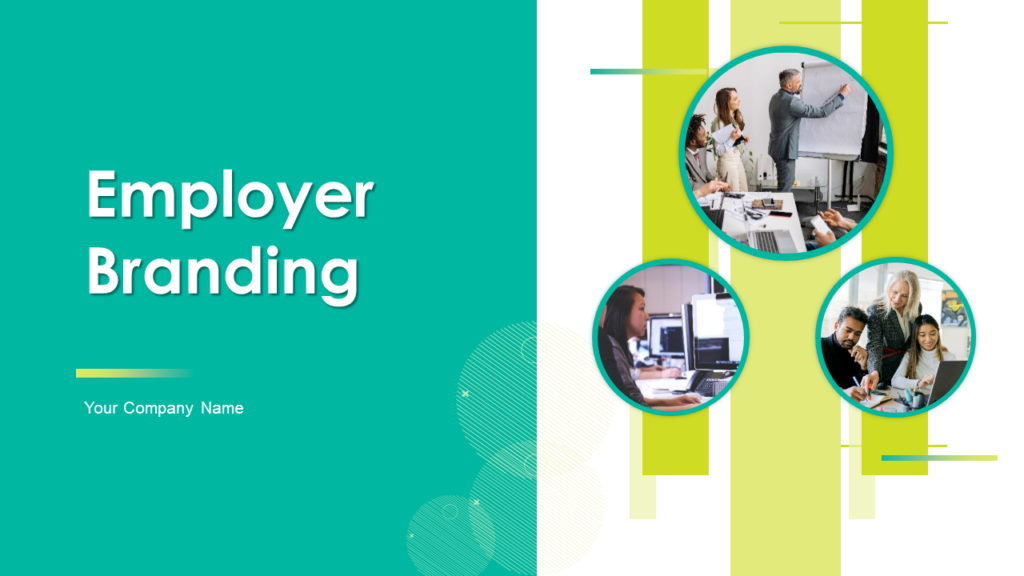
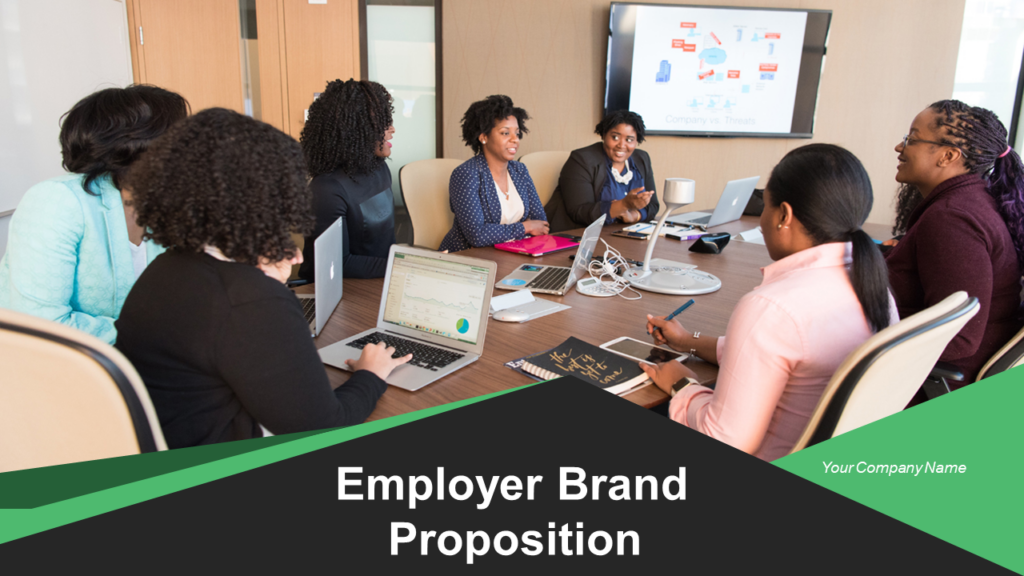
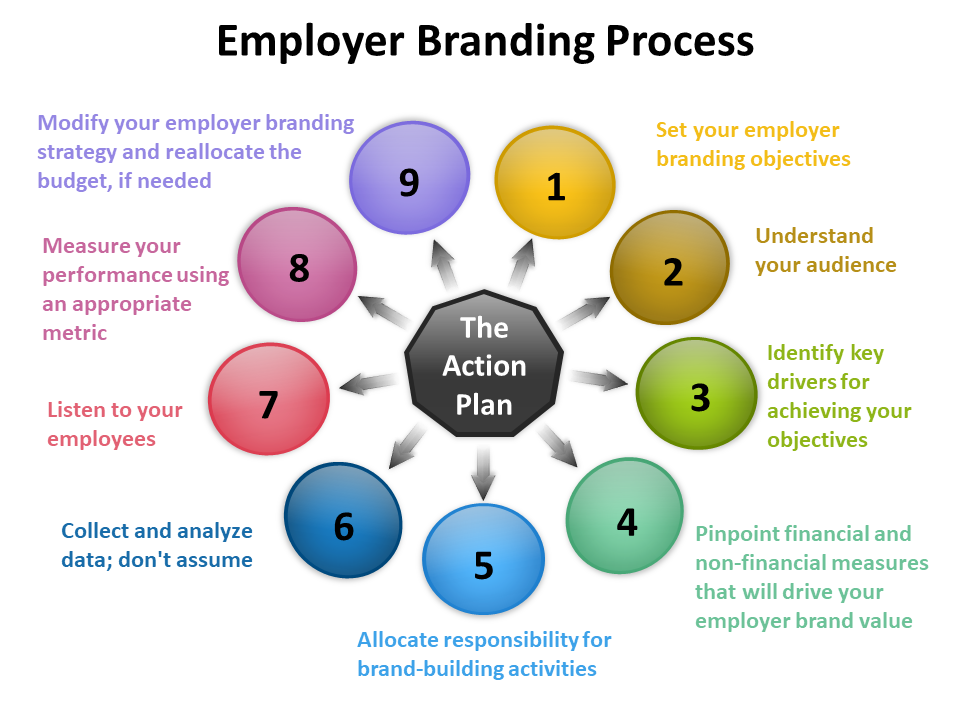
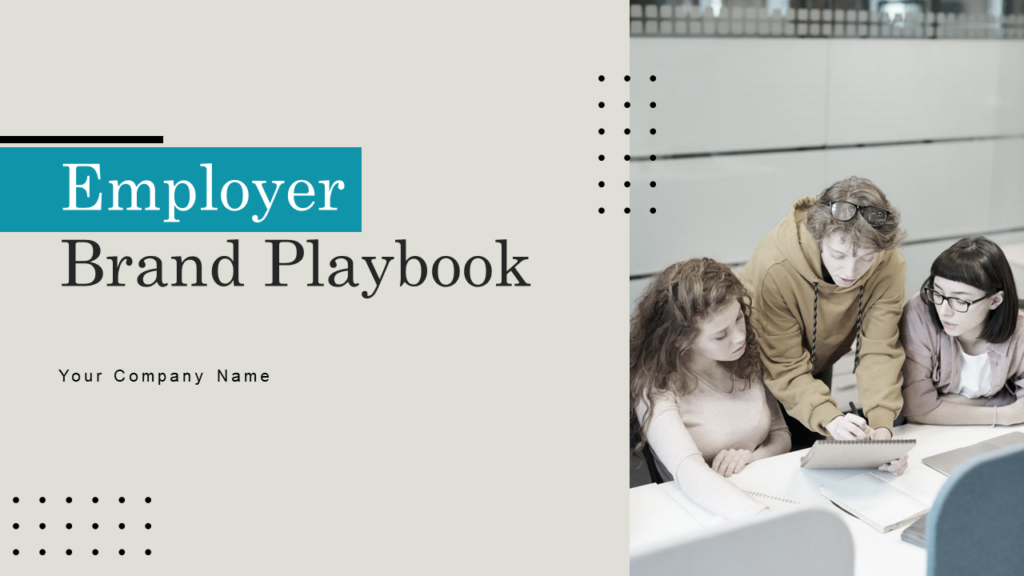

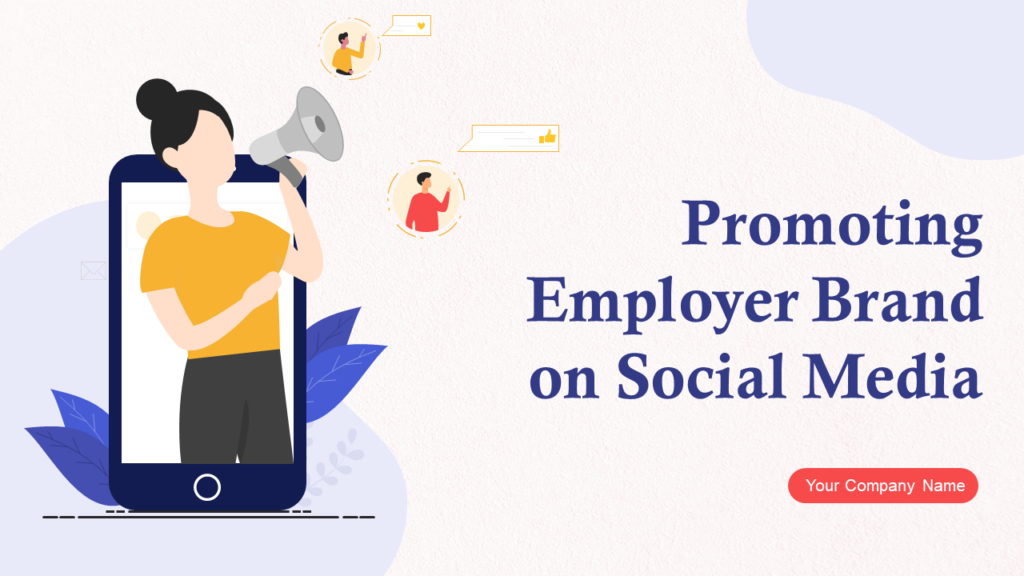




![[Updated 2023] Top 20 Hiring and Recruitment Templates in PowerPoint PPT](https://www.slideteam.net/wp/wp-content/uploads/2020/07/size1001-436-16-335x146.jpg)
![[Updated 2023] 20 Must-Have Recruitment Strategy Templates For Every Human Resource Department!!](https://www.slideteam.net/wp/wp-content/uploads/2020/09/size1001-436-29-335x146.jpg)
![Best Templates to Strengthen Your Employer Branding; Attract and Retain The Best Talent [Free PDF Attached]](https://www.slideteam.net/wp/wp-content/uploads/2022/08/1013x441no-button-13-1013x441.jpg)











